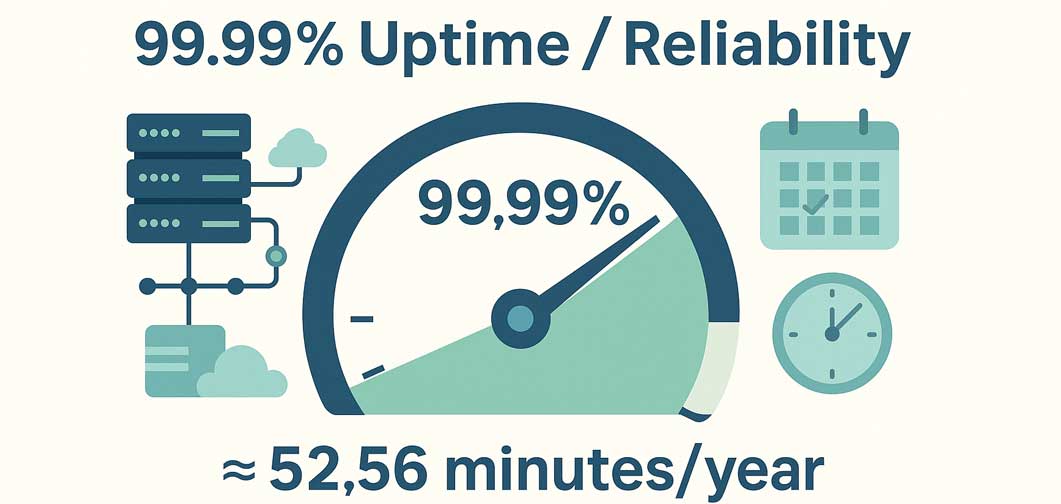Earlier this month my department was, finally, able to get approval for an upgraded Internet line for the office. Previously we were using a business level DSL line that just SUCKED. Whenever someone was uploading anything the download and upload would just grind to a halt and we'd have to find out who was doing what. This happened everyday and it was just painful.
If you've never had the pleasure of using business level DSL in an Internet company count yourself lucky.
Anyway, after literally a whole year of research and proposals and meetings and compromises and revisions we finally got the new line approved.
Halle-Fucking-lujah!!
Of course there's the increased speeds for both up and download, which really can't be understated in it's coolness, but there's also a Service Level Agreement (SLA) which guarantees us an uptime of 99.99%. Having just come from the world of DSL, where the word "reliability" isn't a part of the vernacular, this was a requirement.
Of course this begged the question of just how much downtime is allowed with a 99.99% SLA. Not really wanting to do the math myself I turned to Google and came across a post on John D. Mitchell's Blog with the fortuitous title "What does 99.999% reliability really mean?".
John went to all the trouble of writing a script in Java that quickly outputs the correct time based on the amount of 9s. Since I don't work in Java I thought I'd take a shot at porting his script to php (what else?).
Here's my take on it:
<?php
$sp = array();
$sp = 60;
$sp = $sp*60;
$sp = $sp*24;
$sp = $sp*365;
function determine_nines($num_nines, $seconds){
global $sp;
$seconds = (double)$seconds;
$str = $num_nines." 9's (";
for ($i = 0; $i < $num_nines; $i++) {
if (2 == $i) {
$str .= '.';
}
$str .= '9';
}
$str .= '%) = up to ';
$str .= ($seconds / $sp).'h / ';
$str .= ($seconds / $sp).'m / ';
$str .= $seconds.' seconds of downtime per year.';
$str .= '';
return $str;
}
echo "Nines of Reliability: (Hours / Minutes / Seconds)";
$base = 100.0;
for($i=2;$i<=7;$i++){
if($i != 2){
$base = $base*10;
}
echo determine_nines ($i, $sp / $base);
}
?>
So using my SLA of 99.99% I get a maximum downtime of 0.876 hours or 52.56 minutes of downtime per year.
Cool.
For comparison here's the complete output of the above script (it matches exactly what John had; so that's nice).
Nines of Reliability: (Hours / Minutes / Seconds)
2 9's (99%) = up to 87.6h / 5256m / 315360 seconds of downtime per year.
3 9's (99.9%) = up to 8.76h / 525.6m / 31536 seconds of downtime per year.
4 9's (99.99%) = up to 0.876h / 52.56m / 3153.6 seconds of downtime per year.
5 9's (99.999%) = up to 0.0876h / 5.256m / 315.36 seconds of downtime per year.
6 9's (99.9999%) = up to 0.00876h / 0.5256m / 31.536 seconds of downtime per year.
7 9's (99.99999%) = up to 0.000876h / 0.05256m / 3.1536 seconds of downtime per year.

